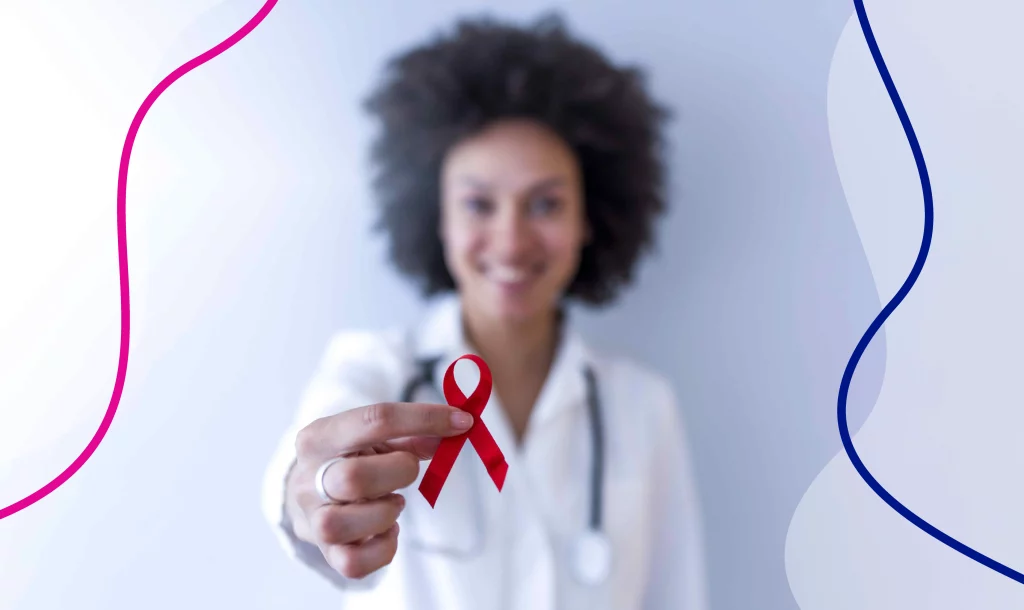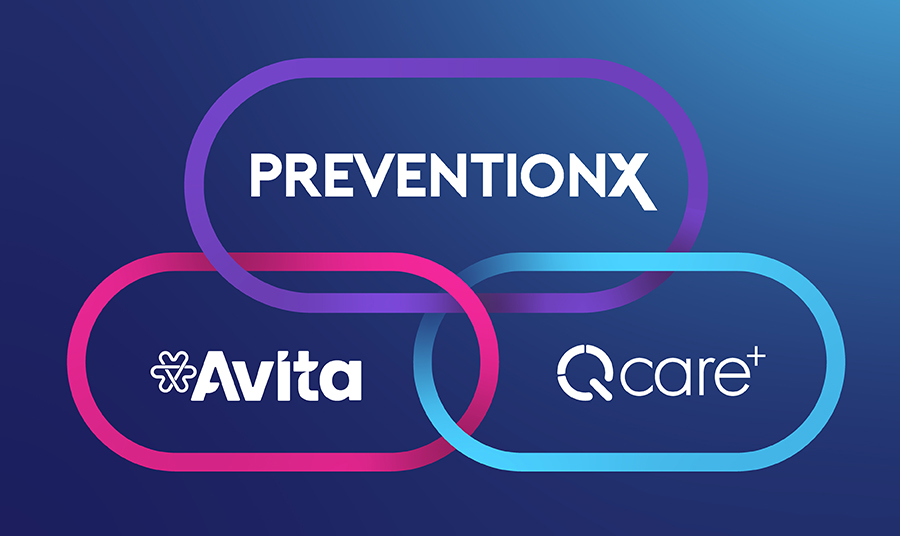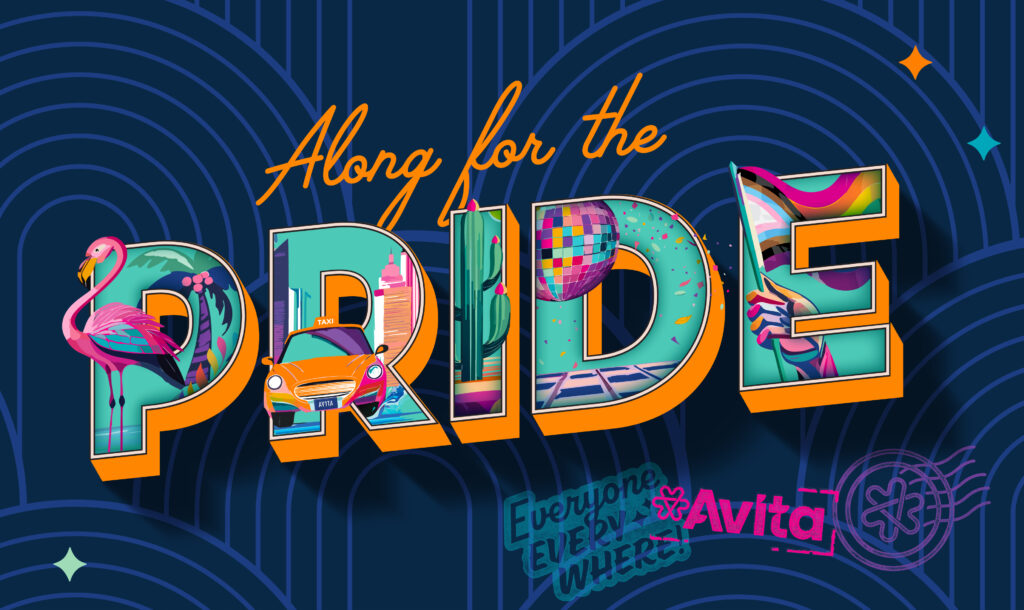World AIDS Day 2022 is just around the corner. Since 1988, December 1st has stood as a bittersweet reminder of our collective response in the fight against HIV/AIDS. It’s a day that represents many things: A moment to honor lives lost, a chance to reflect upon global initiatives for treatment and prevention, and an opportunity to raise our voices in support of those living with the disease or vulnerable to its reach.
What it’s not is a time to rest on our laurels. The theme of this year’s awareness day, “Putting Ourselves to the Test: Achieving Equity to End HIV,” speaks to the overwhelming need to address HIV’s disproportionate impact on underserved communities by strategically stepping up educational and testing programs among specific populations.
“We already know that stigma, staggering health inequities, and social determinants of health cause specific groups to bear the burden of HIV/AIDS,” says Avita Chief Advocacy Officer Glen Pietrandoni. “Combine those factors with the need to communicate about an ever-evolving drug pipeline and the setback caused by the COVID pandemic, and we’re now in a new world in many ways.
“Even though we’ve been battling the virus a long time,” he says, “we have to constantly innovate personalized ways to engage with people and offer them choices on how to prevent and treat HIV.”
The way to create tangible change is through testing and education, says Katy Green, outreach and testing manager at Kind Clinic, an Avita partner and program of 501(c)(3) community-informed non-profit Texas Health Action that empowers individuals to embrace their sexual health and wellness without fear, shame, or judgment. “The number of patients and community members who know very little about HIV/AIDS, or are operating on misinformation, is staggering,” Green says. “Or what they do know is based on fear. But we get to change that.”
Even though we've been battling the virus a long time, we have to constantly innovate personalized ways to engage with people and offer them choices on how to prevent and treat HIV.
Glen Pietrandoni, Avita Chief Advocacy Officer
The data speaks: Out-of-the-box HIV awareness strategies are in order
Consider the following progress in the race to #EndHIV:
-In the past five years alone, more than 14 new medications have been approved by the Food and Drug Administration (FDA) to treat HIV, with a robust pipeline of drug treatments that achieve and maintain viral suppression at the forefront.
-In 2017, the Centers for Disease Control and Prevention (CDC) officially blessed the science behind U=U (Undetectable = Untransmittable), which proves that people living with HIV who are on treatment and have an undetectable viral load cannot sexually transmit HIV to other individuals.
-Advancements in PrEP (pre-exposure prophylaxis) formulation have made it easier for people to lower their chances of getting HIV by up to 99% if used correctly. With a long-acting injectable version approved in 2021 and a variety of other prevention options in the works, patients will soon have a menu of choices at their disposal.
Educating individuals about HIV, PrEP, and sexual health is not a one-size-fits-all endeavor.
Now juxtapose that good news against current challenges:
-Of the approximately 1.2 million individuals living with HIV in the U.S., 13% do not know they have it, and a 2019 study showed that only 43% of all U.S. adults aged 18-64 have ever been tested for HIV. What’s more, recent CDC data showed that the rate of HIV testing fell dramatically during the first year of the pandemic, down 49% for gay and bisexual men, 47% among those in the transgender community, 46% among Latinx people, and 44% for the Black community.
-HIV-related stigma and discrimination are still rampant more than 40 years after the start of the epidemic, and certain well-documented demographic groups face other severe barriers to education, prevention, and treatment. A study showed that 28% of millennials said they have avoided talking to, hugging, or being friends with people living with HIV. Fewer than 70% of people living with HIV have realized lasting viral suppression, and 83% reported challenges accessing care due to at least one social determinant of health indicator (examples include poverty, food insecurity, and homelessness).
-Overall, only an estimated 25% of individuals eligible for PrEP take it; reasons cited include access to care, providers’ failure to talk openly with patients about their sexual health, cost vs. insurance coverage, and—of course—stigma.
The “what gives?” is a complicated question, but Pietrandoni says it’s obvious a shift in approach to outreach is in order. “When it comes to education, prevention, and treatment, we need to think out of the box,” he explains. “Engagement efforts by providers, pharmacists, and others along the patient journey must shift to a more personalized, less medicalized approach. We have to meet people where they are.”
The number of patients and community members who know very little about HIV/AIDS, or are operating on misinformation, is staggering. But we get to change that.
Katy Green, Kind Clinic Outreach and Testing Manager
The COVID pandemic also highlighted the need to combine HIV/AIDS outreach with other social services, Pietrandoni adds. “If homelessness and food instability are already an issue for an individual, attention to HIV prevention and treatment education is going to fall to the wayside,” he says. “We need to tie the fight against HIV into attempts to better other social determinants of health and consider the whole person and their overall needs.”
“PrEP is one of the best ways to talk about prevention because it is such a game changer,” Kind Clinic’s Green says. “Prevention messaging is no longer solely focused on condoms or risk reduction strategies; it’s become something more. [It’s] helped create this incredible conversation, and people are more receptive to learning new information.”
Options like telemedicine, mobile testing programs, and special events that put a creative spin on testing and education are ways community health organizations have adjusted their M.O.s to reengage patients, industry insiders say. But these endeavors must consider a host of factors to gain maximum ROI.
When it comes to education, prevention, and treatment, we need to think out of the box.
Glen Pietrandoni, Avita Chief Advocacy Officer
Top engagement tips for HIV testing and education events
In response to the patient-engagement challenge, many of Avita’s covered entity partners are stepping up their outreach games when it comes to hosting HIV testing and education events timed to World AIDS Day (for example, Kind Clinic is hosting HIV and STI testing events across their multiple locations). Done well, these initiatives are a great way to build trust while helping people unlock healthier lives. According to community health experts, tips for maximizing engagement and sustainable results include:
Go where the patients are: Don’t expect patients to flock to the clinic in droves just because a testing event is on the calendar. Hosting testing and educational events where patients live their everyday lives and/or socialize—including clubs, festivals, fun runs, and other offsite venues—is a successful method to reach target audiences. “Non-traditional activities are viable options we want to see more of,” says Joe Anderson, director of community engagement at Kind Clinic. “Where are the cookouts and fish frys? We need those as well.”
Make it interesting: HIV is a serious topic, but testing events don’t have to be buttoned up. Working with community partners to sponsor food, entertainment, speakers, and event swag can help lighten the mood and draw a crowd (even on a budget). Integrating themes, like Avita’s beYOUtiful campaign, can go a long way.
Know your audience: Educating individuals about HIV, PrEP, and sexual health is not a one-size-fits-all endeavor. For example, engagement efforts that work for the LGBTQ+ community in a metropolitan area might flop for a more rural population that is primarily heterosexual/cisgender. It’s critical to ensure that messaging and materials are personalized to engage the intended attendee base. “We work hard to ensure we’re receiving constant feedback from the community on what their needs and wishes are,” Anderson says.
We work hard to ensure we're receiving constant feedback from the community on what their needs and wishes are.
Joe Anderson, Kind Clinic Director of Community Engagement
Embrace a sex-positive approach: Talking about sex in a whisper and focusing on “risk” is trending downward. Modern community health centers focus on sexual wellness as an overall part of physical and mental wellness and highlight knowing one’s HIV status and prevention options as a way to decrease anxiety and increase pleasure. Access to culturally competent health care providers is crucial, and a judgement-free zone is the name of the game.
Ensure convenience and efficiency: In addition to offering a safe and inviting location, testing and prevention events that allow for walk-in traffic, wait-free testing, rapid results, easy access to educational materials, and plenty of opportunity to ask questions are a win-win.
Select the right staff: “Staffing has a huge influence on building rapport with communities, especially underserved communities, and seeing success in attendance at an event,” Green says. “It’s important to hire staff and recruit volunteers who are from the communities you are trying to serve.”
Hit the road: “One issue we seek to address is making it as easy as possible to get into care,” says Anderson, explaining why Kind Clinic offers mobile testing, outreach workers, and PrEP navigators. “It’s vital that organizations ensure that their outreach and mobile testing teams are all over the city and surrounding areas, letting people know how easy it is to access services.”
Get the word out early: Even the most perfectly planned HIV awareness events won’t succeed if nobody knows about them. Organizations that leverage their websites, social media channels, and onsite and offsite printed materials to advertise in the weeks before the event are more likely to gain traction.
“There are so many small moments to take advantage of to ensure people know how easy it is to access sexual health services,” Anderson says. Green agrees. “With the reach of World AIDS Day, it’s important we have these conversations to encourage people to find out more information about sexual health and the advancement of biomedical interventions.”
There are so many small moments to take advantage of to ensure people know how easy it is to access sexual health services.
Joe Anderson, Kind Clinic Director of Community Engagement
Interested in learning more about how Avita can help your covered entity build its patient base through compassionate and culturally competent clinical care, 340B program expertise, and personalized marketing and community support? Contact us today.




